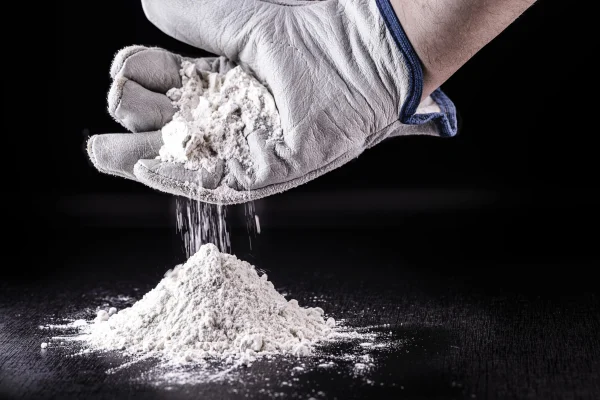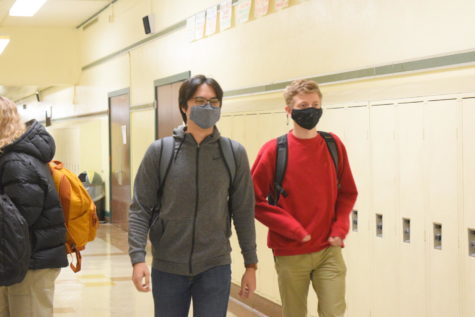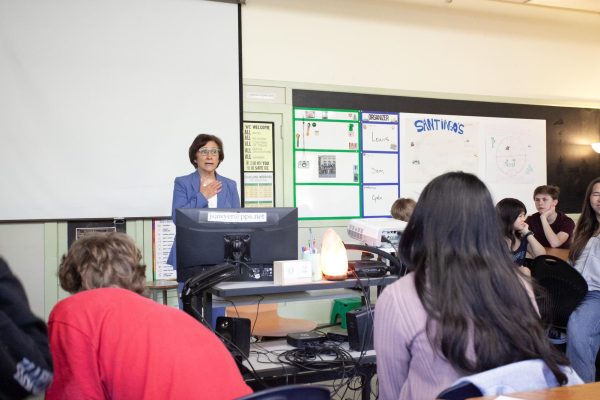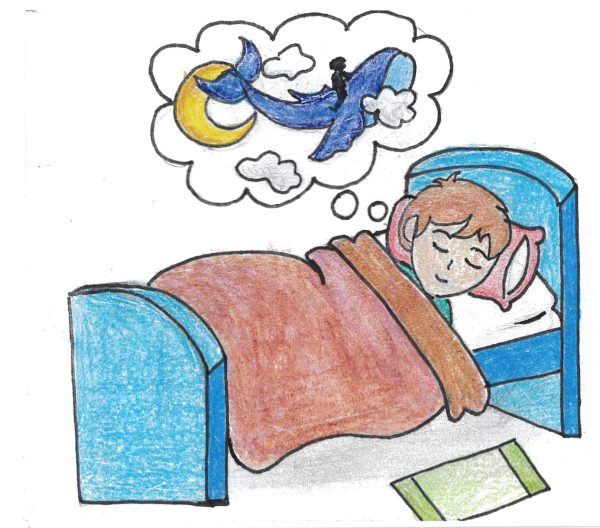Hidden Voices in the Loudest City
Clarion photo Photo courtesy of Sophie Evans
Alvaro Salas has been running one of the largest housing complexes in Manhattan for single adult men, overcoming an array of challenges during the pandemic.
Alvaro Salas’s job is handling crisis. He works with the houseless in the center of American metropolis: Manhattan. He runs the largest housing complex for single adult men, supplying dorm-style housing for approximately 385 individuals.
Whether it be tuberculosis outbreaks, norovirus, drug issues or threats against his own staff, things can go wrong quickly, but Salas is talented at handling dire situations with ease. He took his position of power in Volunteers of America – a national non-profit organization that has been helping people in need for 125 years – after their previous administrator was fired: he’s been able to shape a team to effectively handle issues.
Thus, his team knew that COVID-19 was different. They began preparing for a crisis around mid-February of 2020, after seeing how Europe had begun to shut down. But there were so many questions that went unanswered: how were they going to handle a relatively unknown virus with an extremely vulnerable population?
When Salas realized he could cross Manhattan in 15 minutes, he knew that this situation would be entirely unique.
Disaster struck the United States in the middle of March, and Salas watched as Manhattan shut down. As the subways closed down overnight, a staggering 3,000 houseless individuals came onto the streets. New regulations became mandated by the government: most notably, a six feet apart rule.
The current system of housing is dorm-like, with beds three feet apart, to maintain fire safety protocols. This meant that Salas and his team needed to remove over half of the men housed in the assessment home. It was immoral to tell people to leave, because they had nowhere else to go.
The city and Department of Homeland Services came with an offer to Volunteers of America: they would use hotels. Hotels were struggling with the lack of tourism to the Big Apple, and they needed money. So Salas’s team began looking into how they could make hotels work.
“We had to see if the buildings were in good shape: that the elevators were working, that there were permits, that there was security. And all this was happening when it was all, don’t touch your face, don’t touch anything,” he said.
Although hotels seem like a simple and effective solution, there were many issues that arose. Whereas the wellbeing of people can be easily assessed in the dorm-like housing, how can the safety of clients be ensured with the privacy of hotel rooms? Can people jump out of the windows? How can meals be supplied without a cafeteria? Who will handle laundry? Where will they see doctors? How are 150 people going to get to this hotel in the first place?
The process began in April. Within a week, quick thinking had solved these problems. Meals became microwaveable so residents could eat in the safety of their room – although there were a few lessons on how to use a microwave. And school buses were rented out to transport individuals across the city.
“We needed to divide our staff we had for one building to two buildings, which created a huge gap because we need people for 24 hours,” he said. Hotel rooms were turned to offices, and 16-hour workdays became normal.
That one week took a personal toll on Salas. His desire for public service stemmed from his childhood in Costa Rica, having been raised in a tight-knit community and tradition of Catholic service.
Despite leaving the church due to its opposition to LGBTQ+, and after briefly working in advertising and seeing how minds can be manipulated, he took the powerful lessons taught in his childhood and began working in crisis management. He’s worked during the HIV crisis, in South Africa teaching sex ed, and providing aid to undocumented immigrants.
“Working in non-profit, I may not have liked all my coworkers, but I respect them,” he said.
Throughout his career, he’d always been able to separate work from home, but a pandemic intrudes upon every aspect of life. Every member of his staff had to come to terms with the high possibility of catching COVID-19.
Salas did catch the virus – which he wasn’t aware of until he tested positive for antibodies later – but he was fortunate to only be away from his job for two days before returning to work. Others weren’t as fortunate – those who dealt with cafeteria, security, cleaning – leaving important roles empty for two to three weeks. “Approximately 40 of my staff were sick between March, April and May,” he said.
By June, the situation was under control. The panic had died down, there were ample supplies, and the density reduction hotels were completely integrated into the system. The hospitals could admit more patients, and there was a steady system of quarantine for those who had symptoms. Everything was settled.
But with the winter, there were some growing concerns. Every time there was a projection of an increase of cases in the general population, that increase was sure to be reflected in Salas’s line of work.
“We cannot control the movement of anyone in the shelter system: people are free to leave and come back at any time,” he said. “So we don’t know if these people were interacting with others, with friends or relatives, so there was an influx of testing positive.”
Vaccines were also very difficult to administer. Because people are free to leave the assessment homes, they can be difficult to track. With the Pfizer and Moderna shots – the first widely accessible vaccines – this proved a challenge with people not returning for their second dose. But with the single-shot Johnson & Johnson vaccine, the houseless in Manhattan are receiving vaccinations at a steady rate.
Looking back at the situation, Salas reflects on the aspects that could have improved Manhattan’s response. There were political skirmishes occuring between the mayor and governor of New York – a battle between Manhattan and Albany. The competitiveness which occurred between the two, as well as the federal government’s failure to act, hurt nonprofits such as Volunteers of America who work with the government.
But overall, the response has been more effective than anyone imagined: “In the whole shelter system in New York, not just in my programs, but in general, there have been less than 200 people who have died of COVID,” he said. Salas admits that this number could be higher as there’s an unknown amount who have died from side effects or before being tested.
Looking forward, Salas notes what we can learn from the pandemic. In his building, his team is working towards creating a more client-centered approach. A majority of the houseless individuals in his program have some type of mental health issue, which became more apparent during the pandemic. To solve this, more social workers and substance abuse counselors have been added to the staff: “Clients need to feel that the staff is there to help and not penalize anyone,” he said.
Salas learned many lessons from this pandemic: “This past year confirmed I work with an amazing group of people and that I’m very good at managing crises,” he said. “Don’t wait to receive instructions: be proactive.”
Salas hopes that once 75% of the houseless population is vaccinated, his program may be able to return to where they were before. After a year of darkness, times are looking up for Manhattan and their overlooked citizens.









